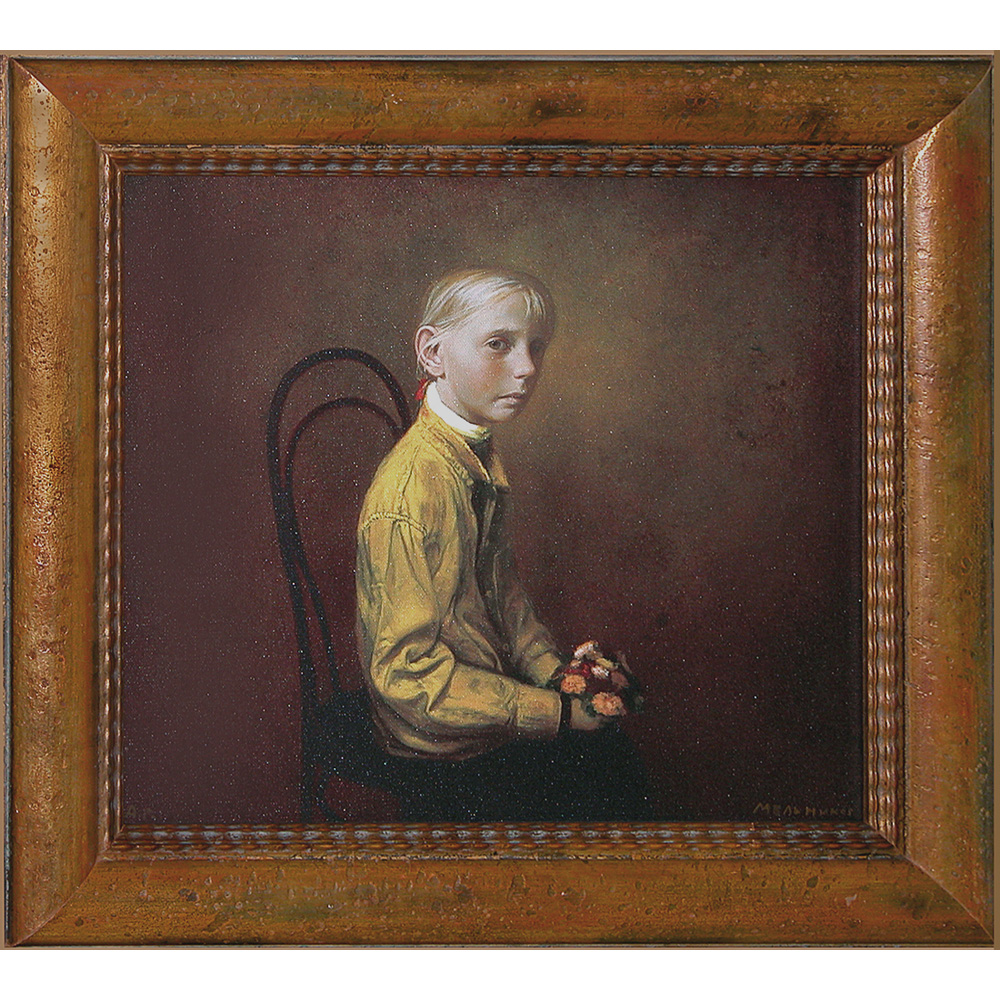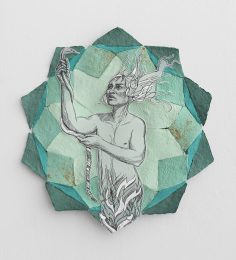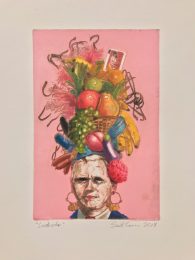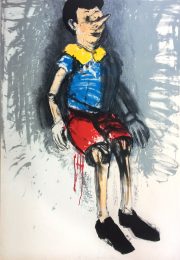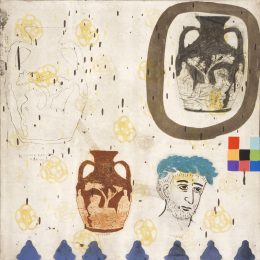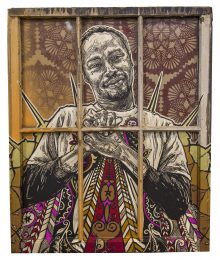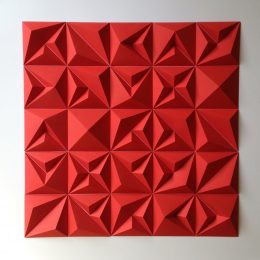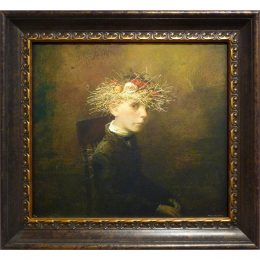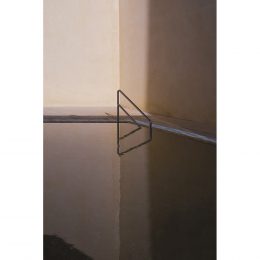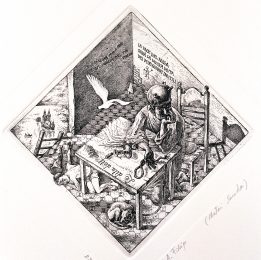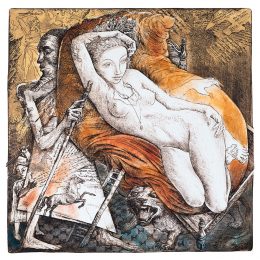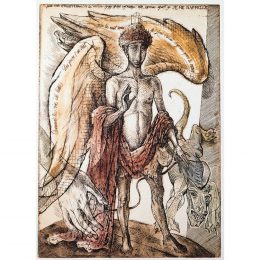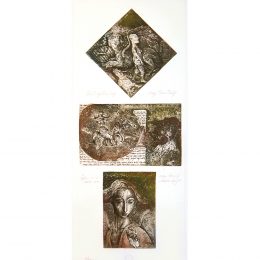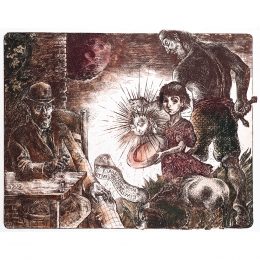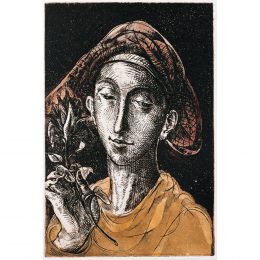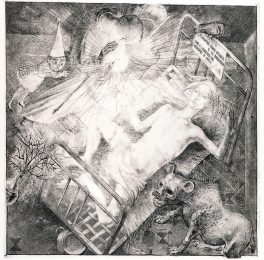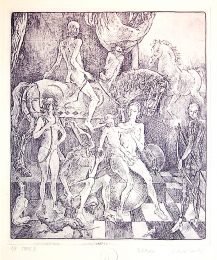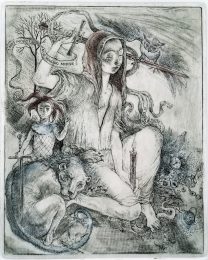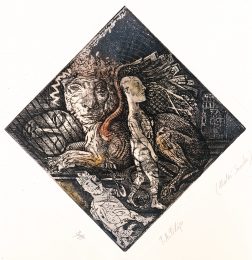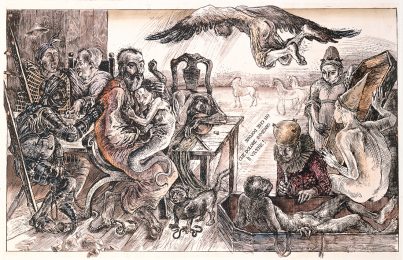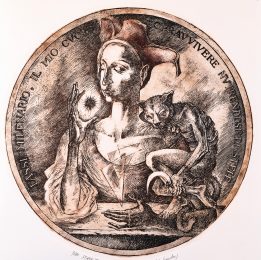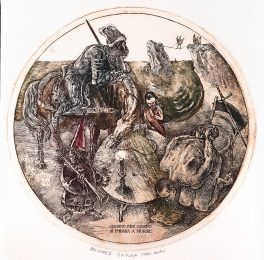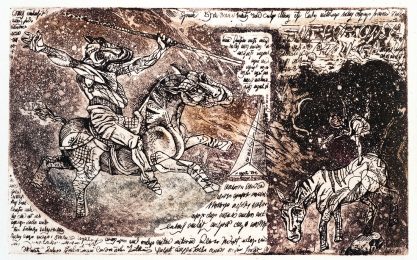Details — Click to read
Igor Melnikov’s archival pigment print on canvas, Yellow Shirt, exhibits Melnikov’s characteristic use of children as vessels for the viewer; with his ambivalent expression and searching eyes, the young boy both retains his own autonomy through his indecipherable gaze, and acts as a manifestation of the audience’s desires and personal, psychological exploration. The work provokes a series of unanswered questions; is the child merely somber or suffering? Is he alone simply for the time spent looking at the work or indefinitely? Within Yellow Shirt, Melnikov has intentionally left the background formally simple but texturally rich, drawing attention through color contrast to the painting’s central subject matter and suggesting equivocal sensations of isolation and comfort.
Russian born artist, Igor Melnivok, upends traditional associations with portraiture through his haunting and intrinsically psychological paintings of emotionally ambiguous children and within his subtle natural explorations. Rather than focusing on the individual identity of those within his works, Melnikov instead looks to viewers as dynamic participants in the interpretation of his paintings, allowing them to determine whether the children might burst into tears or laughter, based on personal experience, thought, and upbringing. Melnikov is fascinated with the simultaneity of happiness and suffering, which he believes function as an expression of the ‘complexity of the human personality’ and exist as a component of the ‘meaning of being’. Melnikov’s paintings are collage-like, yet not in the traditional, material sense of the process—instead layering his own psychological explorations onto his attempted understandings of the human condition and expression. While his muted color palettes might at first appear to be reductive, they instead focus viewers’ attention on the figures within the work and encourage slow and thorough readings of the detailing that remains visually available. While people and the human condition remain the primary subjects within his paintings, Melnikov also expresses an artistic concern for the natural world, whether expressed in landscape surroundings or in its more material and familiar manifestations, seen in the figure’s clothing and simple possessions.
by Keira Seidenberg, Art History/Gender Studies student, McGill University

